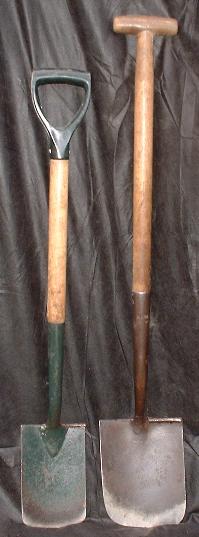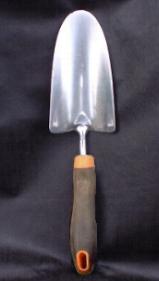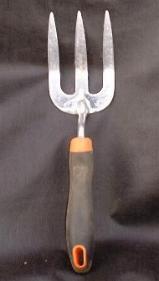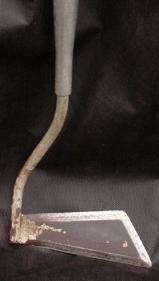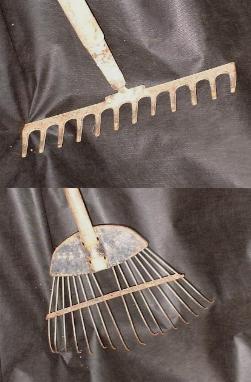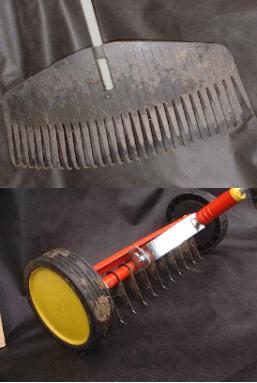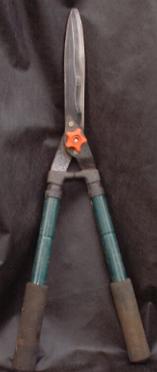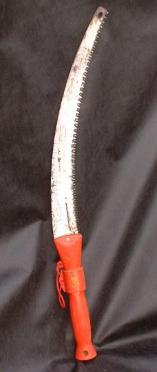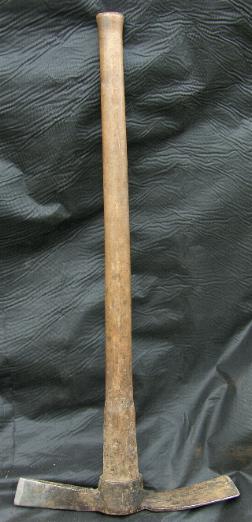"
There is a lovable quality about the actual tools. One feels so kindly to the thing
that enables the hand to obey the brain. Moreover, one feels a good deal of respect
for it; without it the brain and the hand would be helpless."
Gertrude Jekyll
It used to be said that the thing which distinguished humans from the rest of the animal kingdom is that we are intelligent enough to design and use tools. This was disproved in the 1960s during the observations of chimpanzees by Jane Goodall when she recorded them using twigs to extract termites from their mounds. However they do not have a strong grip nor the dexterity with their fingers to hold the types of tools we use - no opposing thumbs. This is thought to be one of the reasons Homo sapiens advanced to become the dominant species of the primates.
Further study of our fellow creatures has revealed more examples of their use of objects to help with tasks, such as members of the crow family using twigs and other objects to obtain food that is out of reach of their beaks. But when it comes to quantity and variety we beat them hands down.
The range of garden tools is certainly endless and every year new ones are introduced promising great benefits over anything that has gone before. The Victorians loved their gadgets and in the latter half of the nineteenth century the number of tools increased greatly.
The majority are not what they are claimed to be and after one or two uses, like kitchen gadgets they end up occupying space in a cupboard or the tool shed, never to see the light of day again. Apart from the most useful tools we possess - our hands - the range of tools needed to tend the average garden is small.
Try to buy tools made from forged metal as it has been tempered to align the particles, giving it tensile strength. Tools pressed from sheet metal are weak and corrode more easily. A good quality handle made from ash or fibre-reinforced resin will be much stronger. Always try them for comfort and ease of handling before purchase. Many tools for use in the standing position have handles that are too short and can cause back strains, usually spades or forks.
This applies as well when buying garden tools for a gift, try to think how the recipient will use it, or
it might be better to give a voucher so that he or she can do the choosing. For small hand
tools choose ones which have bright handles so that they will be easier to spot among foliage or against soil - why so many are made with green or black handles is a mystery! Some bright paint or adhesive tape can be applied to make them stand out.
Second-hand tools can be good quality, and have many years of usefulness left in them. Look in junk shops, auctions and car boot sales. There is the old story of the yard-brush said to have belonged to a grandfather, it has had six new shafts and a dozen new heads and is still going strong!
Garden tools made with copper-based metals are regarded by some to be beneficial to the soil, possibly by adding traces of the metal as they are used, or because copper is non magnetic. The tools are usually made from beaten bronze, an alloy of copper and tin - this makes them hardwearing. They do not corrode as easily as iron tools and look very elegant, if a little pricey.
Whatever tools are chosen, they will last much longer and perform better if a little care is bestowed on them. Clean off any soil and return them to their regular storage spot so you will always know where to find them. Don't leave them outdoors where the metal will rust and wooden handles will rot. A rub over with an oily rag will preserve the metal. Wooden handles will last longer and be more pleasant
to hold if given a rub with boiled linseed oil occasionally.
If a wheelbarrow is required, choose one with a pneumatic tyre, solid tyres are difficult to get over the slightest bump and are very noisy.
A watering can can be used with a fine rose on seedlings, with the rose removed to "puddle in" plants or with a sprinkle bar to apply weedkillers. Though it is preferable to have a separate one for the latter use, also a different colour, usually red. the more expensive metal cans may be more attractive, but they are heavier than plastic.
There is information on lawnmowers in the lawn maintenance section. Other mechanical equipment required once a year or less frequently can usually be hired.
With the advancement in battery technology their convenience over corded models make them easier to use. Again as with hand tools there are some which have limited use so are unnecessary.
